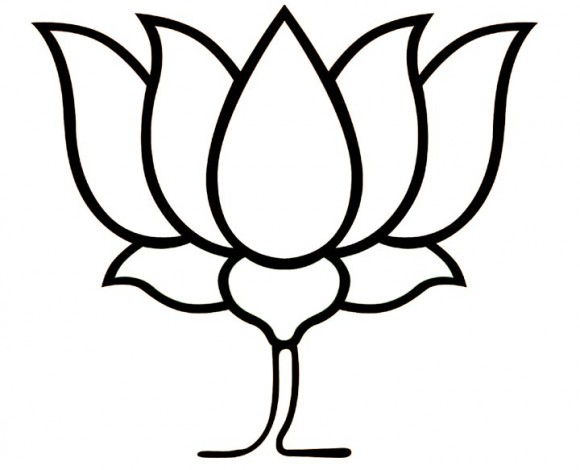Articles features
BJP may have the last laugh in Assam

Ahead of the elections to the Assam assembly, the Bharatiya Janata Party (BJP) has strengthened its position by striking an alliance with the Asom Gana Parishad (AGP).
Although the Assam Pradesh Congress tried its best to keep the BJP and the AGP apart, identical electoral base of the two parties has forced them not to split each other’s vote which would have brought about a mutual downfall.
Sarbananda Sonowal, the central sports and youth affairs minister and the state BJP president, did not appear to be enthused by the tie-up with AGP, as a section of the party, led by AGP legislative party leader Phanibhusan Chowdhury, is known to be close to the Congress. Members of this section had even met state chief minister Tarun Gogoi, of the Congress, a few days back.
The deal with the BJP, however, was clinched by the more powerful faction of the AGP, led by party president Atul Bora.
An undercurrent of misunderstanding in the alliance was inevitable as both the AGP and the BJP have their primary electoral base among the Assamese Hindu middle class, which controls the politics of the entire upper and central Assam.
In spite of the AGP’s fast dwindling support base, its call for regionalism still holds appeal in large parts of Assam. On the other hand, a vast number of Adivasi tribes working in numerous tea gardens of upper Assam had voted for the BJP in the last parliamentary elections.
As the AGP also enjoys acceptability in upper Assam and good rapport with numerous indigenous communities living on both sides of the Brahmaputra river, mutual contests between the AGP and the BJP would have benefited the Congress.
The Congress has decided to contest the elections alone, for the simple reason that other political outfits have chosen to avoid the Congress.
The Muslims, who constitute almost 34 percent of Assam’s population, particularly the Bengali speaking ones of lower Assam, are now tilting towards the All India United Democratic Front(AIUDF) of Badruddin Ajmal. This time Congress is not even sure of support from the Assamese speaking Muslims of upper Assam who had stood by the party during the last parliamentary poll.
A quick journey to the world of statistics will point out to the rising fortune of the BJP in Assam. From one percent vote in the 1985 assembly elections, the BJP has showed signs of ascendancy in 2006 assembly elections by capturing 12 percent votes.
In the 2009 Lok Sabha polls, its share of vote jumped to 16 percent and the party captured four seats. Although in the 2011 assembly elections it experienced a slight reversal of fortunes, the party came out with flying colours in the 2014 Lok Sabha election when it captured 36 percent votes and seven out of the 14 Lok Sabha seats from Assam.
Observers of the northeastern politics think this time the BJP may lose some of its popularity among the Assamese Hindu voters due to its decision to grant the right of stay to immigrants who are minorities in Bangladesh and transfer of land under the Indo-Bangladesh Land Boundary Agreement. But these two factors may not be enough to shift the ground completely for the BJP.
For the Congress, lower Assam and the Barak Valley are two important areas. While lower Assam has 46 percent Muslim votes, the figure is 37 percent in the Barak Valley. However, in 2014, the Congress could capture only 23 percent of Muslim votes in these two regions.
The appearance of the AIUDF on Assam’s political map has brought about a qualitative change. The Front got 39 percent of the state’s Muslim votes in last polls while the Congress’ share came down to 40 percent.
There has been a 10 percent decline in the Congress’ overall vote share in Assam between the 2011 assembly elections and the 2014 Lok Sabha polls, and a major reason behind it is AIUDF’s poaching into Congress’s traditional vote bank of Muslims and the Bangladeshi immigrants. The AIUDF had won 18 seats in the 2011 assembly elections and led in 24 assembly segments in the 2014 parliamentary polls.
Anti-incumbency factor may go against the Congress this time. Tarun Gogoi is generally considered to be competent but there is a palpable yearning for a new face in the chief minister’s chair.
That the Congress and the AIUDF could not form an alliance is due to the fact that both are trying to outwit each other in order to become the principal face of the Muslim electorate. The AIUDF will contest in 60-odd seats and this does not augur well for the Congress.
The BJP’s small partners like the Boro People’s Front (BPF) with 2.1 percent votes will chip in for its success. The BPF had won 12 assembly seats in 2011 and the Boros have significant presence in 50 other seats.
Arithmetical calculations favour the BJP-AGP-BPF combination. But Tarun Gogoi has many upset victories to his credit.
(Amitava Mukherjee is a senior journalist and commentator. The views expressed are personal. He can be contacted at amukherjee57@yahoo.com)



































